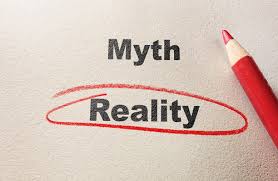
A Happy Little Secret
You know that old saying, “happiness comes from within”? The topic of self-love and its connection to a fulfilling life has been the subject of many a self-help book and countless articles over the years. Being happy with ourselves promotes happy and healthy relationships with others. It also contributes to our self-confidence, which in turn contributes to success in our personal and professional lives.
Now I know what you’re thinking – “easier said than done”. Sure, it sounds great in theory but it’s a lot harder in practice. I get it. We’re human after all, and life isn’t perfect. Far from it. It can be tough to love yourself sometimes. Maybe it’s a battle with low self-esteem. It's hard to feel good about ourselves if we don’t have confidence in our abilities. Or maybe it’s feelings of inferiority: “I wish I was as popular as her”, “why can’t I be as confident as that guy?”, “I’ll never amount to anything”. And then there’s that little (big) thing that we’ve all pondered at some point -- our life's purpose. “Why am I here?”, “am I important?”, “do I matter to anyone?”
Indeed, loving yourself is very important in building healthy relationships. But what if I told you that the key to a truly fulfilling and joyful life is NOT inside of you? You read that right. The key to happiness is not inside of you. If it is happiness that you seek, you need to look outside of yourself. There is mounting evidence that the secret to a truly joyful and purpose-driven life is found in service to others.
The great news is that there are many ways to serve in your community. You can volunteer with any of the hundreds of organizations right in your city or neighborhood. They can sure use the help. But before you sign up, take a moment to think about the following things:
1. What skills or talent do you possess that can help others?
In other words, what are you really, really good at and how can you put that skill to use in making someone’s life better? (More on skills-based volunteering in my next blog post)
2. What are you passionate about?
Every act of service is important and will leave you feeling great afterwards; but volunteering for a cause that really speaks to you kicks that feeling up a few notches from happiness to bliss.
Serving others creates a sense of purpose in our lives; and a purpose-driven life is a happy life. We see the world differently when we feel good about the direction our life is headed in. Our perspective changes for the better. The way we view ourselves changes, too. We're more confident and we just feel good about ourselves.
TIME.com published an article in August of this year that delves deeper into the connection between volunteerism and a life of happiness. The article is entitled "The Secret to Happiness is Helping Others". Spread the word!
Happy Sunday.








